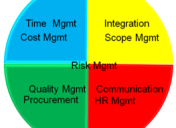Six frogs on a lily pad – A parable for change
Six frogs are sitting on a lily pad. One of them decides to jump off.
How many frogs are left?

Five – right? Well, no. There are still six frogs because the frog in question hasn’t done anything yet. Yes a decision has been made but no action has been taken. And that’s the point.
We can know what needs to change. We can make a decision to change it. We can even write it down in the minutes and send out emails. But no change is truly successful until action is taken.
Regardless of the change model you follow, there are always many variables to manage and one of the more challenging variables is getting your people to change their actions. Duke University research proved that over 40% of the daily actions people take are not conscious decisions but driven by habits they have formed. Sound farfetched?
How many times a day do you look at email, or go for a coffee, or check your watch? Those are all most likely actions you take out of habit. There are many more habits people have that impact the quality of their work – not asking a powerful question, deciding to act on an idea later, approaching something the same way when you know there are better ways.
So – if some habits can become a problem, let’s look at how to manage them better.
Deconstructing habits
A habit is actually three things in sequence: a cue, a routine and a reward (which is the reason that the habit exists).
Here’s one that’s pretty typical:
- Cue – arriving at my desk and turning on my computer
- Routine – opening Outlook first and checking my inbox
- Reward – proof that I’m needed (people have sent me things) and I’m very busy (a full inbox or calendar)
The danger of this habit is the distraction of new emails that don’t advance key plans and activities. We become reactive, not proactive.
How to deal with unproductive habits
Humans need habits and love forming them. So, rather than try to ‘break a habit’, it is more effective to replace it with a more productive habit.
Working backwards, the first step is to identify the cue. Charles Duhigg (author of “The Power of Habits”) identifies that there are typically five sources of a cue – location, time of day, emotional state, other people or a preceding action.
In my example about my morning routine, the cue is from the action of arriving at the office. From there we need to work out both how to get the reward and also what productive routine to establish in place of the robotic opening of Outlook. Handy hint – if you have an alert that pops up whenever an email arrives, turn it off! It does more harm than good for your productivity.
So – what habits can you spot in your own actions over the next 48 hours? Are they productive or destructive? What are the cues that set them off and what are the rewards that you’re craving?
What changes can you make to be the frog that actually jumps off the lily pad?
You may be interested in purchasing this book
Contributor – Matthew, Ancora Learning Specialist Consultant & Facilitator
Matthew is a creative and practical HR professional, with over 20 years in organisational development and learning. He has delivered results across multiple industries and countries, with experience advising from the shopfloor to senior executive levels. As an expert facilitator and coach, Matthew’s key interest is creating behaviour change by designing and delivering practical programs and process improvements that can lift employee performance and engagement. His preferred approach is consultative and engaging, using questioning and listening techniques to get to the heart of any matter.
Do you need help managing business change or helping your people make small but significant changes in behaviours, actions or performance?
Call us on 1300 ANCORA (1300 262 672)
Related Posts
- ← How to encourage positive responses to change in your workplace
- Ancora Learning now offering accredited course →



















